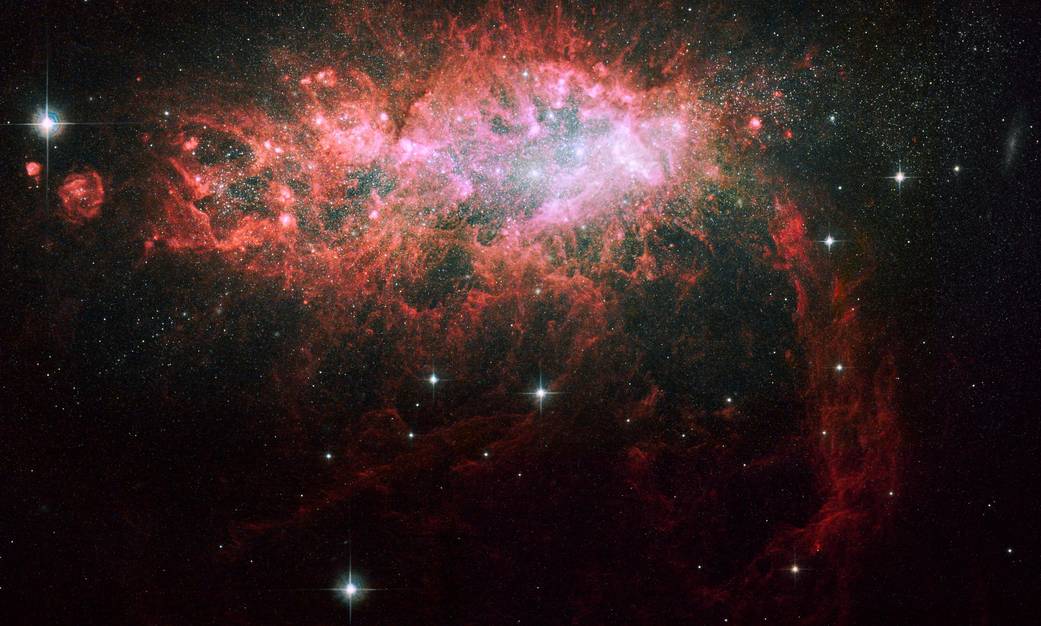Astronomers have long puzzled over why a small, nearby, isolated galaxy is pumping out new stars faster than any galaxy in our local neighborhood.
Now NASA’s Hubble Space Telescope has helped astronomers solve the mystery of the loner starburst galaxy, called NGC 1569, by showing that it is one and a half times farther away than astronomers thought.
The extra distance places the galaxy in the middle of a group of about 10 galaxies centered on the spiral galaxy IC 342. Gravitational interactions among the group’s galaxies may be compressing gas in NGC 1569 and igniting the star-birthing frenzy.
The farther distance not only means that the galaxy is intrinsically brighter, but also that it is producing stars two times faster than first thought. The galaxy is forming stars at a rate more than 100 times higher than in the Milky Way. This high star-formation rate has been almost continuous for the past 100 million years.
Discovered by William Herschel in 1788, NGC 1569 is home to three of the most massive star clusters ever discovered in the local universe. Each cluster contains more than a million stars.Image Credit: NASA, ESA, the Hubble Heritage Team (STScI/AURA), and A. Aloisi (STScI/ESA)
1 min read



























